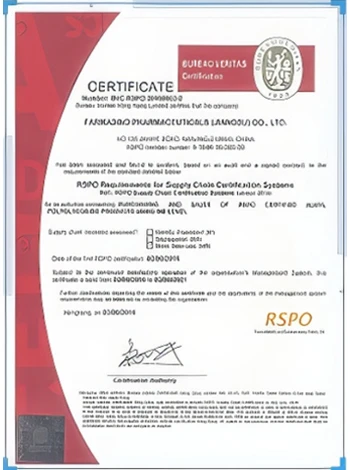



Safety Data Sheet for 2M Sodium Hydroxide Handling and Storage Guidelines
Safety Data Sheet for 2M Sodium Hydroxide An Overview
Sodium hydroxide, commonly known as caustic soda or lye, is a highly versatile chemical with numerous applications in various industries, including manufacturing, food processing, and laboratory use. The handling of sodium hydroxide, particularly in its 2M concentration, necessitates a thorough understanding of its properties, hazards, and safety protocols, as outlined in its Material Safety Data Sheet (MSDS).
Chemical Identity and Composition
Sodium hydroxide (NaOH) is a strong alkaline compound that readily dissolves in water, releasing heat in an exothermic reaction. The 2M solution indicates a molarity of 2 moles per liter, which signifies a relatively high concentration. This characteristic can cause significant hazards if not managed appropriately. The MSDS provides essential information regarding its chemical structure, synonyms, and formula, which aids in the quick identification of the substance.
Hazards Identification
When working with 2M sodium hydroxide, it is imperative to be aware of its potential hazards. The chemical is corrosive and can cause severe burns upon contact with skin, eyes, or mucous membranes. Inhalation of sodium hydroxide mist or dust can lead to serious respiratory issues, including irritation and damage to lungs. Additionally, ingestion can result in extensive internal injuries, making it crucial to handle the substance with care.
The MSDS categorizes the chemical hazards, signaling that sodium hydroxide is generally classified as a health hazard. Precautionary statements are provided to minimize risk, such as using protective equipment, ensuring proper ventilation, and adhering to recommended exposure limits.
First-Aid Measures
The MSDS specifies crucial first-aid measures in case of exposure to sodium hydroxide. For skin contact, the affected area should be rinsed immediately with copious amounts of water for at least 15 minutes. If sodium hydroxide gets into the eyes, it is vital to flush the eyes with water while keeping the eyelids open for at least 15 minutes and seek medical attention without delay. In the event of inhalation, moving the individual to fresh air is essential, and if breathing difficulties occur, professional medical assistance must be obtained.
sodium hydroxide 2m msds

Storage and Handling
Proper storage and handling practices are essential for minimizing risks associated with 2M sodium hydroxide. The MSDS advises storing the chemical in a cool, dry place, away from incompatible materials such as acids, organic substances, and metals. Containers should be clearly labeled and constructed of materials resistant to corrosion. All personnel handling sodium hydroxide should be adequately trained and equipped with appropriate personal protective equipment (PPE), which includes gloves, goggles, and face shields.
Personal Protective Equipment (PPE)
The MSDS highlights the importance of PPE to prevent exposure. Eye protection, such as safety goggles or face shields, is vital when handling sodium hydroxide solutions. Protective gloves made from materials resistant to alkalis should be worn to safeguard the skin. Additionally, using lab coats or chemical-resistant clothing is recommended to provide an extra layer of protection.
Accidental Release Measures
In the event of a spill, the MSDS outlines the necessary steps for containment and cleanup. Immediate evacuation of the area is suggested to ensure safety from exposure. Sodium hydroxide spills should be contained using inert materials, and the area should be neutralized with a suitable acid before disposal. Always refer to local regulations for disposal procedures to mitigate environmental impact.
Conclusion
Sodium hydroxide is a powerful chemical widely used in various applications but poses notable hazards that must be managed. The MSDS for 2M sodium hydroxide serves as a critical resource for understanding these risks and ensuring safe handling, storage, and emergency response procedures. By adhering to the guidelines provided in the MSDS and employing proactive safety measures, we can effectively work with sodium hydroxide while minimizing its dangers. Awareness and education are key components to fostering a safe work environment when dealing with such potent substances.
-
Why Sodium Persulfate Is Everywhere NowNewsJul.07,2025
-
Why Polyacrylamide Is in High DemandNewsJul.07,2025
-
Understanding Paint Chemicals and Their ApplicationsNewsJul.07,2025
-
Smart Use Of Mining ChemicalsNewsJul.07,2025
-
Practical Uses of Potassium MonopersulfateNewsJul.07,2025
-
Agrochemicals In Real FarmingNewsJul.07,2025
-
Sodium Chlorite Hot UsesNewsJul.01,2025










